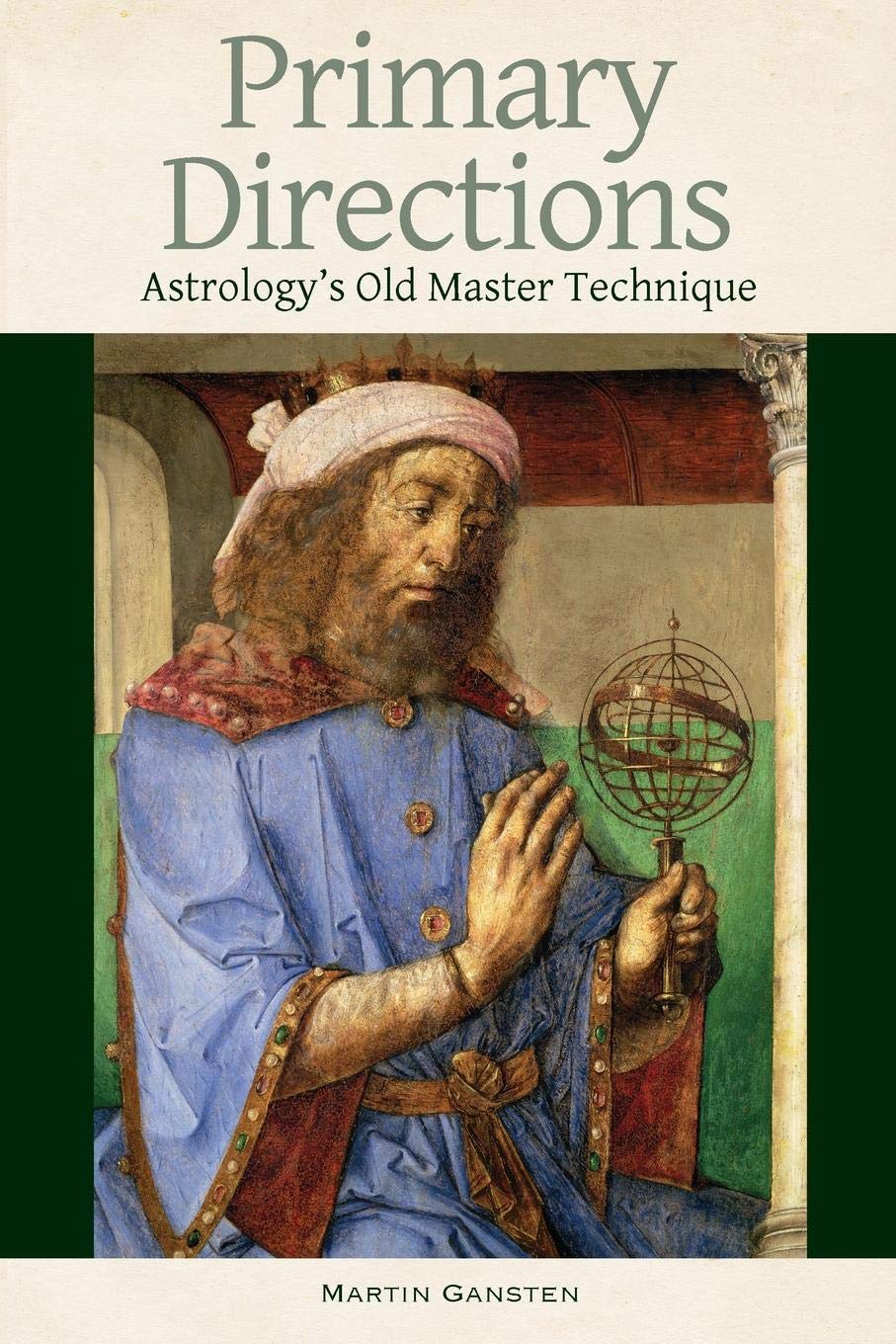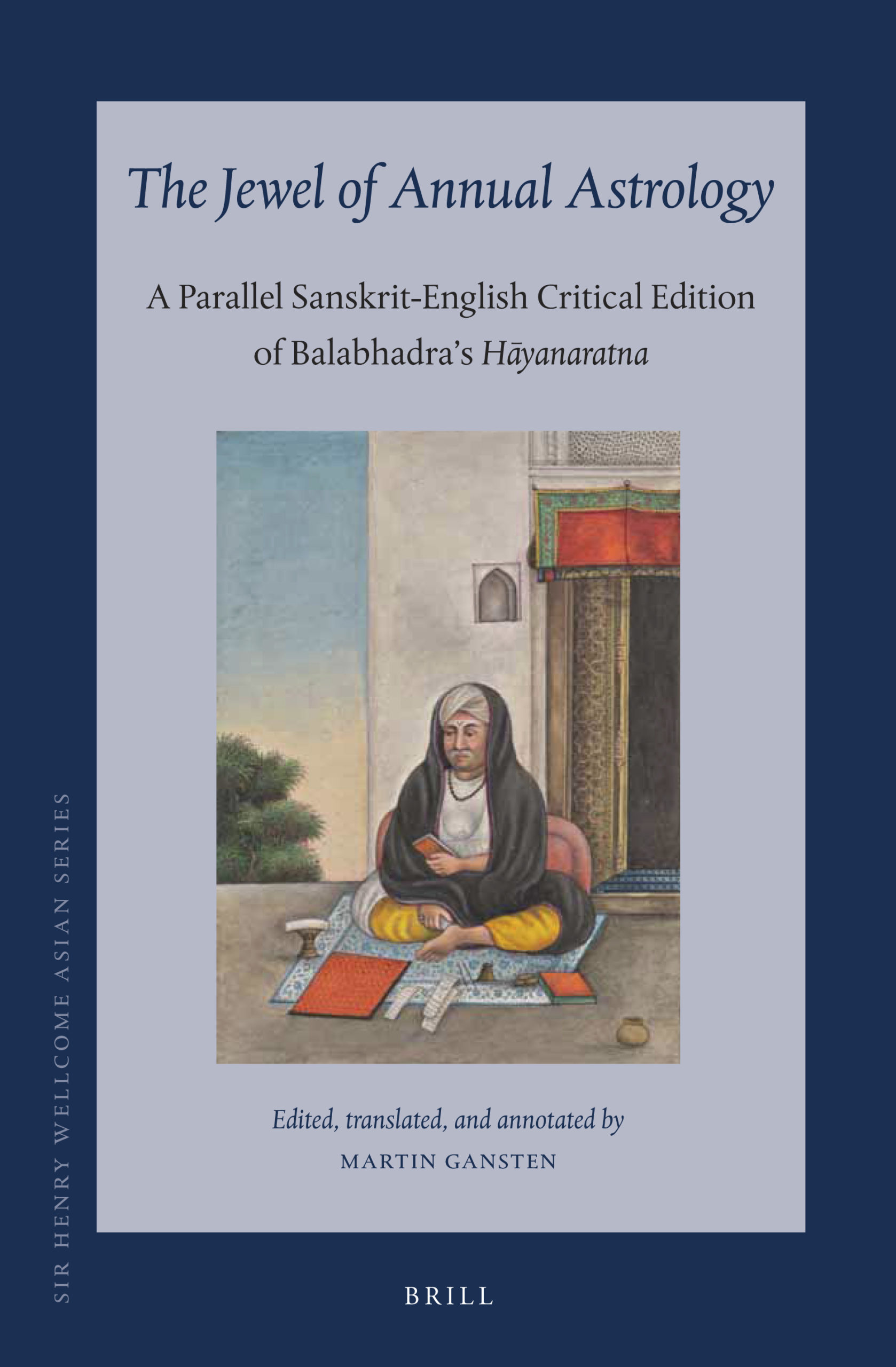Books by Martin Gansten
Annual Predictive Techniques of the Greek, Arabic and Indian Astrologers
Predictions for each year of life go back to the earliest times of Hellenistic astrology and were elaborated by the Persian and Arabic astrologers, who emphasized the revolution of the nativity, known today as the solar return. From the medieval Arabic-speaking world, these annual predictive techniques spread eastward into India and westward into Latin Europe, where they continued to evolve. For the first time, this book draws together material on annual predictions from ancient and medieval authors writing in Greek, Arabic and Sanskrit, and to a lesser extent Hebrew and Latin, demonstrating the techniques with a wealth of present-day example charts.
After introducing the principles and historical background of the techniques, Annual Predictive Techniques devotes separate chapters to practical illustrations of the use of primary directions and profections together with transits at the time of the revolution (the birthday). It then demonstrates how to integrate them step by step with the figure of the revolution, or solar return chart. The final chapter discusses various methods for subdividing a year and identifying times of major importance. The book includes an appendix with software settings for calculating primary directions in the traditional way, as well as formulae for those who prefer to make their own calculations, and a glossary of astrological terms in several languages.
Annual Predictive Techniques of the Greek, Arabic and Indian Astrologers (published by The Wessex Astrologer) is available now from online booksellers such as Amazon. Click here to read free samples from two chapters of the book.
Reviews of Annual Predictive Techniques
The Astrological Journal, May/June 2021: The author is both historian and astrologer and combines simplicity of explanation with deep knowledge of the source material – a combination of clarity and erudition rarely encountered. It is obvious that he has practised the techniques extensively and is generous in sharing his findings over what works best […] I felt I was being guided by a tutor rather than being simply given the material. If you enjoy reading about astrological techniques, and the history of astrology, you will love this book. A copy should grace every astrologer’s bookshelf.
The Mountain Astrologer, June/July 2021: Although Gansten describes a cohesive method, there are a plethora of tips offered throughout the text that the reader can try out, regardless of how far one has assimilated the entire approach. […] As a testament to Gansten’s clarity as a teacher: I understand only some applications of traditional astrology. Although I read Annual Predictive Techniques rather quickly for review, I followed his thinking and examples and will certainly return for further investigation.


Primary Directions: Astrology’s Old Master Technique
The technique known today as primary directions is one of the most ancient and renowned methods of astrological forecasting, and also one of the most powerful. From classical antiquity throughout the Middle Ages and Renaissance, all the great names of traditional astrology have worked with primary directions. It was the predictive technique of Dorotheus and Ptolemy, of Māshāʾallāh and Abū Maʿshar, of Regiomontanus and Placidus, of Morin de Villefranche and William Lilly. To understand the Old Masters of astrology, we must understand primary directions.
Students of traditional astrology have often been deterred by overly mathematical presentations from approaching the important subject of directions. This comprehensive study explains the principles of primary directions in an accessible way, illustrating them by practical examples. It also draws on many original source texts to outline the historical origins and development of the technique, and shows how it has been reinterpreted and occasionally misunderstood. A full glossary and appendices with software reviews as well as formulae for manual calculations complement the text. The craft of the Old Masters can still be learnt.
Primary Directions: Astrology’s Old Master Technique (published by The Wessex Astrologer) can be ordered through online booksellers such as Amazon. Click here to read a free sample chapter.
Praise for Primary Directions
Robert Hand: Martin’s book is the first clear non-technical exposition of Placidean and other primary directing techniques ever written, and that word is ‘ever’ … no technique in astrology has ever been the subject of such obfuscation.
Dr Benjamin Dykes: Your book on primary directions is one of the best astrology books I’ve read in years! … really the best book ever written on primary directions.
Deborah Houlding: What has been needed for a long time is a no-nonsense text, which can offer a well informed outline of the topic as a whole, and then work towards shading in the details in a simple to understand style. Martin Gansten has perfectly fulfilled the task. Assuming no prior knowledge, his book begins with an overview and a history of the subject. It then breaks the subject apart – so that the various elements and terms are explained – before putting it all back together again so that the student can apply the technique in practice.
Christopher Warnock: Primary Directions is an excellent introduction to what Martin rightly pinpoints as a key natal timing technique. The explanations of the complex mathematical and astronomical basis of the primary directions are clear and lucid. Martin has managed to walk the fine line between oversimplification and overloading the reader with technical details. I would definitely recommend Primary Directions to anyone interested in traditional natal astrology and natal timing.
Other reader comments
This is one of the finest astrological texts I’ve encountered – the writing is clear, precise and accessible without denying the complexity of the subject matter; and I’m understanding the mechanics of primary direction to a degree that I wouldn’t have thought possible, given my limited mathematical background. There is more carefully thought-through and gracefully-presented information within these pages than in many works of three times the length. You provide your reader with soil and seed for a rich harvest, indeed. Thank you very much for your work. – Bonnie Wells
I do believe your work will become an astrological classic. It fills a massive gap for the whole astrological community [and] has been sorely needed. For the non-mathematically minded amongst us like myself it makes the subject far more approachable and dispels many myths. I am sure your book will remain the definitive book on the subject for decades to come. – Mark Cullen
I managed to make a first reading of the book and the sensation was of someone entering a cluttered and disordered room and patiently putting everything in place. Everything clear. – Alexandra Haschi
The Jewel of Annual Astrology
The Jewel of Annual Astrology (Hāyanaratna) is an encyclopaedic treatise on Tājika or Sanskritized Perso-Arabic astrology, dealing particularly with the casting and interpretation of anniversary horoscopes. Authored in 1649 CE by Balabhadra Daivajña, court astrologer to Shāh Shujāʿ – governor of Bengal and second son of the Mughal emperor Shāh Jahān – it casts light on the historical development of the Tājika school by extensive quotations from earlier works spanning five centuries.
With this first-ever scholarly edition and translation of a Tājika text, Martin Gansten makes a significant contribution not only to the study of an important but little known knowledge tradition, but also to the intellectual historiography of Asia and the transmission of horoscopic astrology in the medieval and early modern periods. While the introduction and notes are intended for an academic readership, Balabhadra himself wrote for practising astrologers, and his manual will be of interest to many contemporary students of astrology.
The Jewel of Annual Astrology was published under Open Access by the academic publisher Brill and is freely available here. Hard copies are available directly from Brill or through online booksellers.
Other publications
For my scholarly papers on the history of astrology, see the academic section of this website.

